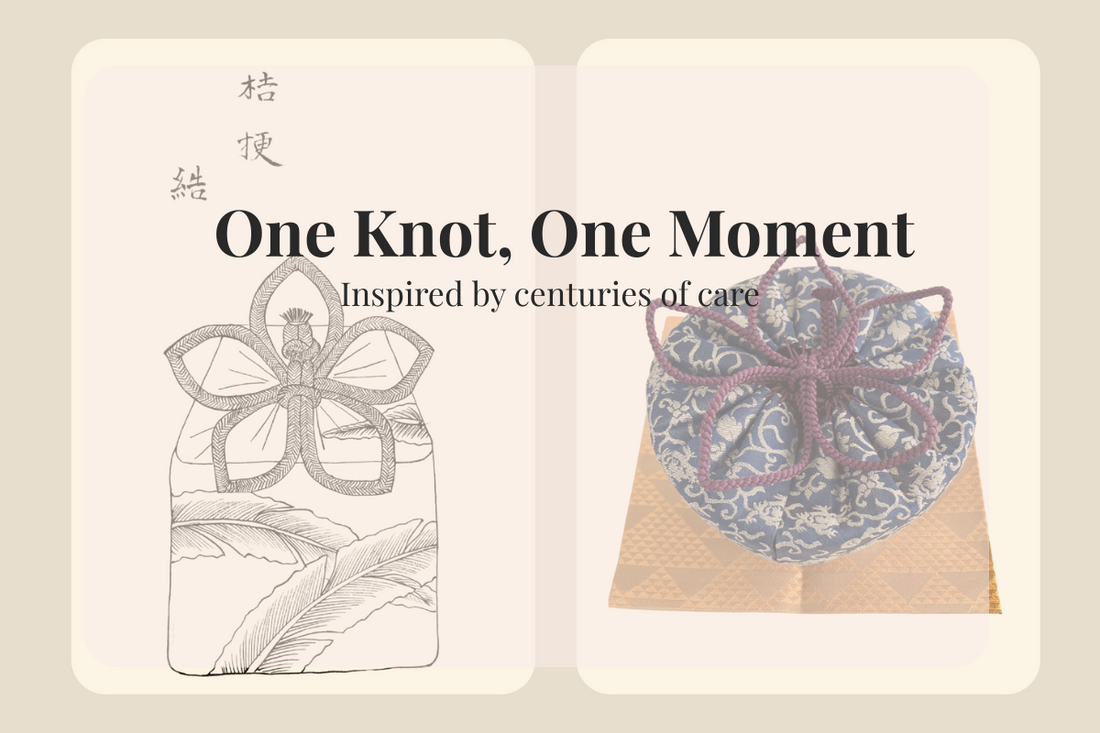
The Hidden Meaning of Musubi: The Japanese Knot That Binds People Across Time
A Symbol in a Fast World
We live in a time where connections often feel fleeting. Everything moves quickly, and yet, something within us longs for meaning—for a thread that ties us to others in a lasting way.
In Japan, one quiet tradition reminds us that even the simplest actions can carry deep meaning. It's called musubi: the act of tying a knot.
What Is Musubi?
"Musubi" (結び) means "knot" in Japanese, but it also represents something more sacred: the invisible bond between people, things, and moments in time. In Shinto belief, musubi is the divine force of creation, connection, and transformation.
When you tie something carefully, with intention, you're not just closing it—you're expressing presence, love, and care. That moment becomes a ritual.
Musubi in Japanese Culture
In daily life and ritual, musubi appears everywhere:
-In ceremonial knots on envelopes (mizuhiki)
-In weddings, where a knot symbolizes two lives becoming one
-In shrines, where sacred ropes (shimenawa) connect heaven and earth
It's both a gesture and a philosophy.
The Deeper Meaning Behind the Knot
In Japan, wrapping is not just about covering an object. It's about honoring it.
This is the heart of furoshiki — a square piece of cloth used for wrapping gifts, carrying items, or simply showing thoughtfulness. Furoshiki is sustainable, reusable, and beautiful. But its most important feature is the knot.
That knot is the moment the object becomes meaningful. It is the act of musubi.
I enjoy learning the art of musubi from Tanaka Toshiko, a master of hanamusubi (floral knot-tying). Her teaching goes beyond form. The way you tie a musubi reflects what’s inside you — your personality, your focus, even your mindset.
Sometimes, she can understand who I am just by looking at my knot.
In that sense, Musubism is not just a brand — it’s a quiet philosophy.
To tie with care is to grow with awareness. Every knot becomes a step in self-discovery.
Recently, I had the rare opportunity to view 'Tama Asobi', a historical book from my teacher’s collection, authored by Yugawa Kyōho and published in 1801. The book features over sixty knots used to secure tea utensil pouches, showing only the final form—no instructions. Tanaka-sensei and her teacher painstakingly reconstructed each one.
These knots once functioned as safeguards, like seals—meant to be untied only once, with no way to replicate them exactly. They protected objects, and in a deeper sense, intentions.
One of the knots I practiced recently was the kikyō (bellflower), shaped like a five-pointed star. As I tied it beside the ancient illustration, I felt as though I was connecting across time—with the people who once tied it centuries ago. That is musubi, too.
Why Musubi Resonates in the West
Western culture cherishes symbols like the Celtic knot or the infinity loop. These symbols speak of love, eternity, and unbroken bonds.
Musubi, though lesser known, offers a similar thread of meaning—but with a distinctly Japanese sense of presence and care.
In a world that often feels disconnected, musubi invites us to slow down and wrap our intentions with grace.
Bring Musubi Into Your Life
Whether it's wrapping a gift, tying your lunch, or carrying a furoshiki bag, this practice can become a quiet ritual of gratitude and connection.
🎁 Explore meaningful furoshiki and bring the spirit of musubi into your daily life — Shop now on Amazon → — now 20% off for Prime Day!
🔗 Further Reading & Cultural Links
- The Meaning of Japanese Knots in Ritual and Art
- Why Wrapping Matters: A Cultural History of Furoshiki
- Symbols of Connection from East to West
These articles deepen the conversation—and build bridges between traditions.
Musubi isn't a product or a technique. It's a gesture. A way of seeing the world. And in every knot we tie, we have a chance to create beauty, to offer presence, and to connect.
Let every knot you tie be a blessing.
Tie gently. Wrap with care. Share meaning.
